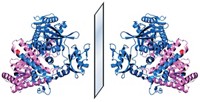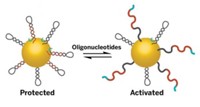Advertisement
Grab your lab coat. Let's get started
Welcome!
Welcome!
Create an account below to get 6 C&EN articles per month, receive newsletters and more - all free.
It seems this is your first time logging in online. Please enter the following information to continue.
As an ACS member you automatically get access to this site. All we need is few more details to create your reading experience.
Not you? Sign in with a different account.
Not you? Sign in with a different account.
ERROR 1
ERROR 1
ERROR 2
ERROR 2
ERROR 2
ERROR 2
ERROR 2
Password and Confirm password must match.
If you have an ACS member number, please enter it here so we can link this account to your membership. (optional)
ERROR 2
ACS values your privacy. By submitting your information, you are gaining access to C&EN and subscribing to our weekly newsletter. We use the information you provide to make your reading experience better, and we will never sell your data to third party members.
Materials
DNA Origami
Universal design scheme can wind DNA into any two-dimensional shape
by Bethany Halford
March 20, 2006
| A version of this story appeared in
Volume 84, Issue 12

At a scale of 1:200 trillion, Paul W. K. Rothemund's new map of the Americas won't help anyone trying to navigate a cross-country road trip. But the simple, universal design scheme that the California Institute of Technology computer scientist invented to create the image-just a few hundred nanometers across and made entirely of DNA-offers scientists a stunningly simple and versatile route to create nanostructures from the bottom up (Nature 2006, 440, 297).
DNA's regular structure and predictable chemistry make it an ideal building block for bottom-up fabrication. Scientists have been using it for years to build nanoscale cubes, cages, and octahedrons. Now, with his so-called DNA origami, Rothemund has taken DNA nanofabrication to a new level, creating DNA nanodesigns 10-fold more complex than any made previously.
With DNA origami, Rothemund can knit the nucleic acid into any two-dimensional shape or pattern. Stars, snowflakes, and smiley faces just 100 nm wide are among his tiny creations.
"Rothemund has taken a new step in DNA nanotechnology and has built an origami system that allows the formation of arbitrary patterns with what appears to be relatively little effort and expense," says New York University chemistry professor and DNA nanotechnology pioneer Nadrian C. Seeman. "This is an exciting advance, which is likely to revolutionize pattern formation on this scale."
Rothemund starts the origami process by sketching out the nanostructure's desired shape on his computer. To this sketch, he computationally fits the structure's long, single-stranded DNA scaffold and hundreds of short pieces of DNA that will staple the scaffold rigidly in place. Design in hand, Rothemund mixes the component nucleic acids together and anneals them for a couple of hours to generate the final structure in good to excellent yields. He says each nanostructure takes about two weeks to realize from concept to construction.
"Rothemund's work not only presents stunningly successful engineered molecular assemblies, but it simultaneously disproves three long-held tenets of DNA nanoconstruction," notes Thomas H. LaBean, a professor of chemistry and computer science at Duke University. "This study has shown that nucleotide sequence at crossover points need not be carefully optimized and that thorough purification and precise stoichiometric control of synthetic oligonucleotides are unnecessary."
Scientists see potential for DNA origami in areas as diverse as electronics and molecular biology. "In addition to the obvious potential impact on assembly of functional nanoscale materials and molecular circuits, since this work utilizes the folding of genomic viral DNA, it hints at possible future applications in medical diagnostics and therapeutics," LaBean adds.





Join the conversation
Contact the reporter
Submit a Letter to the Editor for publication
Engage with us on Twitter